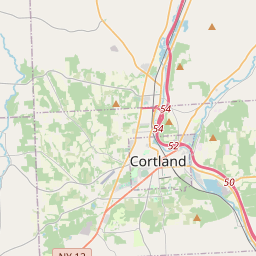American Revolutionary War Memorial
Historical marker location:






1765: The Stamp Act is passed by the British Parliament, imposing a tax on American colonists for various printed materials. This sparks widespread protests and resistance among the colonists.
1770: The Boston Massacre occurs when British soldiers fire on a crowd of American colonists in Boston, resulting in the death of five colonists. The event further escalates tensions between the colonists and British authorities.
1773: The Boston Tea Party takes place as colonists, disguised as Native Americans, dump tea from British East India Company ships into Boston Harbor in protest against the Tea Act.
1774: The First Continental Congress convenes in Philadelphia. Delegates from twelve of the thirteen colonies gather to discuss grievances against British policies and plan a united response.
1775: The Battles of Lexington and Concord mark the beginning of armed conflict between British troops and American colonial militia. The "shot heard 'round the world" ignites the Revolutionary War.
1776: On July 4, the Second Continental Congress adopts the Declaration of Independence, drafted primarily by Thomas Jefferson. The document asserts the colonies' independence from Britain and outlines the principles of individual rights and self-government.
1777: The American victory at the Battle of Saratoga in New York proves to be a turning point in the war. It convinces the French to openly support the American cause and enter the war as allies.
1778: The Treaty of Alliance is signed between the United States and France, formalizing their military alliance. France provides crucial support to the American forces, including troops, naval assistance, and financial aid.
1781: The Siege of Yorktown takes place in Virginia, where combined American and French forces, led by General George Washington and French General Rochambeau, successfully trap British General Cornwallis and his troops. Cornwallis surrenders on October 19, effectively ending major hostilities in the Revolutionary War.
1783: The Treaty of Paris is signed, formally ending the American Revolutionary War. Great Britain recognizes the independence of the United States and establishes its boundaries. The treaty also grants fishing rights to American fishermen in the waters off Newfoundland and Nova Scotia.
1787: The Constitutional Convention convenes in Philadelphia to draft a new constitution to replace the Articles of Confederation, which proved ineffective in governing the newly independent nation.
1788: The United States Constitution is ratified by the required number of states and goes into effect. It establishes a strong federal government with separate branches and a system of checks and balances.
1789: George Washington is inaugurated as the first President of the United States, and the new federal government is established in New York City.
This timeline provides a general overview of the major events during the American Revolution, but it is important to note that there were numerous other battles, diplomatic negotiations, and developments that occurred during this period.
New York State was the site of the deadliest terrorist attack in United States history prior to 9/11. In 1993, a bomb planted in the World Trade Center by Islamic extremists killed six people and injured more than a thousand others.
In the late 1700s, New England pioneers migrated to the region, attracted by the fertile land and the opportunity to establish farms. The town of Homer was founded in 1791 and became the first settlement in Cortland County. Other towns followed suit, such as Marathon, Cortlandville, and Virgil, as the population gradually increased.
The 19th century brought significant developments to the county. The construction of the Chenango Canal, which connected the Susquehanna River to the Erie Canal, provided an essential transportation route for goods and people. This sparked further economic growth and encouraged industrialization in the area. Several mills were established, including sawmills, gristmills, and textile mills, which contributed to the county's economy.
Cortland County also played a role in the abolitionist movement and the underground railroad. Many residents were active in the anti-slavery cause, and the county saw numerous fugitive slaves seeking freedom. The county's ties to the abolitionist movement continued during the Civil War, with many residents enlisting in the Union Army.
Today, Cortland County is known for its scenic landscapes, outdoor recreational activities, and educational institutions like SUNY Cortland. The county's history and heritage are preserved in its various museums and historical sites, offering visitors a glimpse into its fascinating past.
Cortland County Timeline
This timeline provides a glimpse into the major events and milestones that have shaped the history of Cortland County, New York.
- 1791 - Cortland County is created from part of Onondaga County.
- 1808 - The Village of Cortland is incorporated.
- 1823 - Cortland County Courthouse is constructed.
- 1848 - The first railroad reaches Cortland County.
- 1865 - The State Normal School, now SUNY Cortland, is established.
- 1860s - Cortland becomes an important center for manufacturing and commerce.
- 1890s - The economy shifts to focus on agriculture, dairy farming, and tobacco production.
- 1960s - Cortland County experiences significant growth and development.
- 2000s - Emphasis on tourism, outdoor recreation, and agriculture.